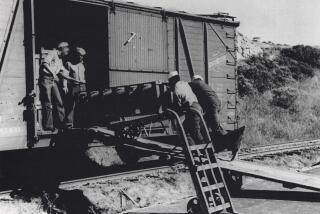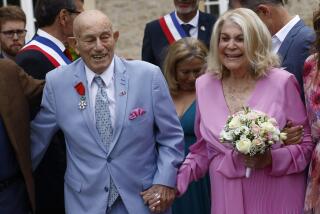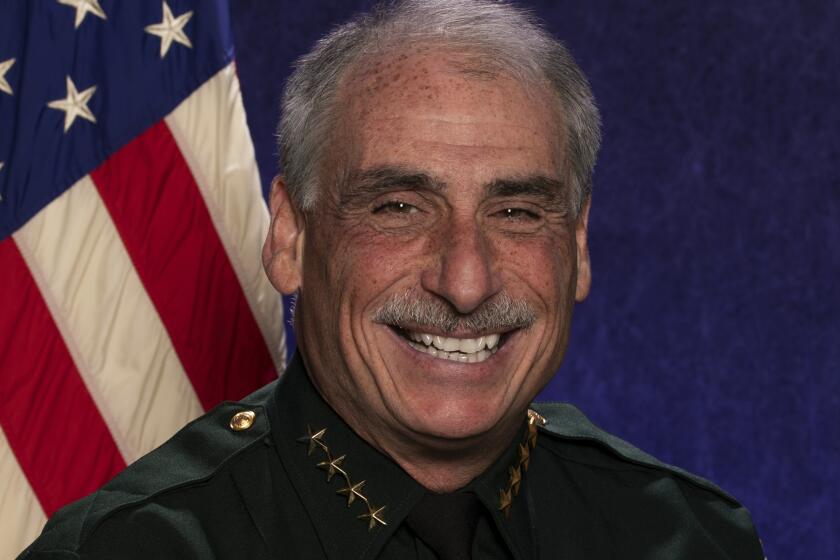WWII vets recall the day Japan surrendered: ‘We had survived’
Seventy years ago Saturday, Japan announced that it would surrender, bringing an end to the bloodiest conflict in human history.
Celebrations broke out across the globe that day, Aug. 15, 1945. In the United States, across the international dateline, the celebrations began Aug. 14. Thousands of men and women serving overseas now knew, finally, that they were going home.
Three veterans recall how they heard the news on VJ Day.
John Hancock
Age: 91
City: Athens, Ga.
Deep down in his bunk in the aircraft carrier Saratoga in Pearl Harbor, John Hancock heard a barrage of gunfire: Boom! Boom! Boom!
The 21-year-old first-class aviation pilot from Brunswick, Ga., pulled on his pants and shoes quickly. Another attack? “What the hell’s the matter?” he cried as he reached the topside. The war is over, a buddy told him.
“It was absolutely crazy,” Hancock said. “On the ship we were whooping it up. ... I could come home. We were happy because we had survived.”
Hancock, a retired navy captain who enlisted when he was 17, graduated from boot camp in 1941. A year later, he fought in two major naval battles in the Pacific — the Battle of the Coral Sea and then the Battle of Midway, firing so many rounds at Japanese torpedo planes that the barrel of his .50-caliber machine gun overheated and had to be replaced.
Many of his friends — including a high school classmate, Clarence Hill — died in the three-day Battle of Midway that ended with the sinking of the aircraft carrier Yorktown. The ship had to be abandoned.
In all of the commotion, Hancock got separated from everyone else and bobbed alone in the water for four or five hours until his rescue. He didn’t even realize he had suffered shrapnel wounds to his neck.
“I lost so many friends,” he said.
Hancock, who now lives in Athens, Ga., said he remains thankful for the atomic bombing of Hiroshima and Nagasaki.
“It stopped the killings on both sides,” he said. “I tell you: We would have lost a million Americans on the beaches. It stopped the war.”
NEWSLETTER: Get the day’s top headlines from Times Editor Davan Maharaj >>
Cecil N. Duck
Age: 89
City: Pensacola, Fla.
Cecil Duck, a 19-year-old cook with the U.S. Navy, was leaning against a railing of the Sheridan, a transport ship, just off the Zamboanga Peninsula in the Philippines — admiring the local women paddling alongside in dugout canoes — when the PA system announced the Japanese had surrendered.
Duck, who was 17 when he enlisted in the Navy in Pensacola, Fla., in 1943, had not expected the Japanese to surrender so soon.
“All of us were ecstatic,” he said. “We were tickled to death about it, because none of us wanted to go into an invasion of Japan. We knew if we did, it would be a terrible thing.”
During his two years as a cook on the naval attack boat, Duck prepared meals — roast lamb chops, potatoes and gravy, canned vegetables — for thousands of troops who boarded the ship on their way to various ports throughout the Pacific: Saipan, Guam, Leyte, the Philippines and Okinawa.
He served 6 1/2 years with the Navy and later joined the Air Force, working first as a cook and aircraft maintenance technician. He retired in 1964 and lives in Pensacola.
After Japan surrendered, his ship was loaded troops for the occupation of Japan and sailed to Tokyo Bay, arriving Sept. 2, just in time to watch Gen. Douglas MacArthur and other leaders gathered for the formal surrender ceremony on the deck of the battleship Missouri.
The mood was somber, Duck said, as he joined a large crowd at the stern of the Sheridan to watch from afar as representatives from several nations, including Gen. Yoshijiro Umezu, chief of the Imperial Japanese Army General Staff, signed documents formally ending World War II.
“Everything was just as quiet as a mouse,” Duck said. “Nobody said anything. And then after it was over with, there was a big loud cheer. I hollered just like the rest of them.”
Lincoln Ward
Age: 91
City: La Mesa, Calif.
Long before he became a vice president with AT&T and served on a board that established a museum on the aircraft carrier Midway in San Diego, Lincoln Ward was a teenager from New York’s Long Island who went to war.
He was born Feb. 12, 1924, Lincoln’s birthday, which accounts for his first name. His birthday, Ward likes to point out, also was the date George Gershwin’s “Rhapsody in Blue” made its debut.
He enlisted in the fall of 1942. He was 17 but doesn’t seem to find that noteworthy. Everyone back then, he said, did their part in the war, one way or another.
Ward served in the Army Signal Corps in Europe and fought in the Battle of the Bulge. After the war in Europe ended in May of 1945, he was transferred to Marseille in southern France, where he boarded a ship bound for the Philippines.
“Our destination was scheduled to be Manila, where we would stage for the invasion of Japan,” he said.
Two things stand out from that voyage: The troops got to sleep in a quiet bed every night and “we had our first ice cream in probably 2 1/2 or three years.”
Ward was on the deck, either just sitting around or playing bridge, when the vessel suddenly made a sharp right-hand turn. “Now hear this,” blared a voice on the PA. “Now hear this.” The voice said the ship was no longer headed to Manila: “The destination is Newport News, Va.”
Men cheered. They hugged. What happened next, Ward thinks now after so many decades, was his idea.
He and three buddies went down to their lockers and then returned to the deck with their rifles. Piece by piece, the men disassembled their guns and tossed the parts into the sea.
Twitter: @stevepadilla2
Jarvie is a special correspondent.
ALSO:
Abe expresses ‘grief’ for war, but says Japan can’t apologize forever
Sus Ito’s WWII photos reveal daily life of a little-known Japanese American unit
WWII vet’s rap sessions connect with fifth-graders
More to Read
Sign up for Essential California
The most important California stories and recommendations in your inbox every morning.
You may occasionally receive promotional content from the Los Angeles Times.











